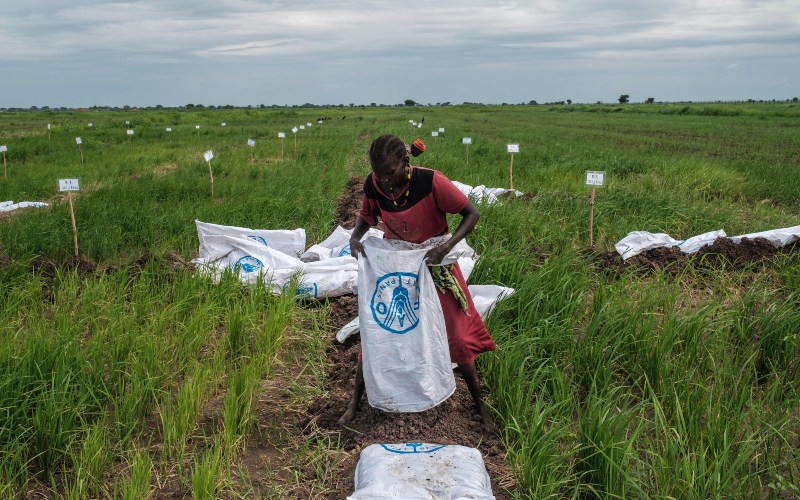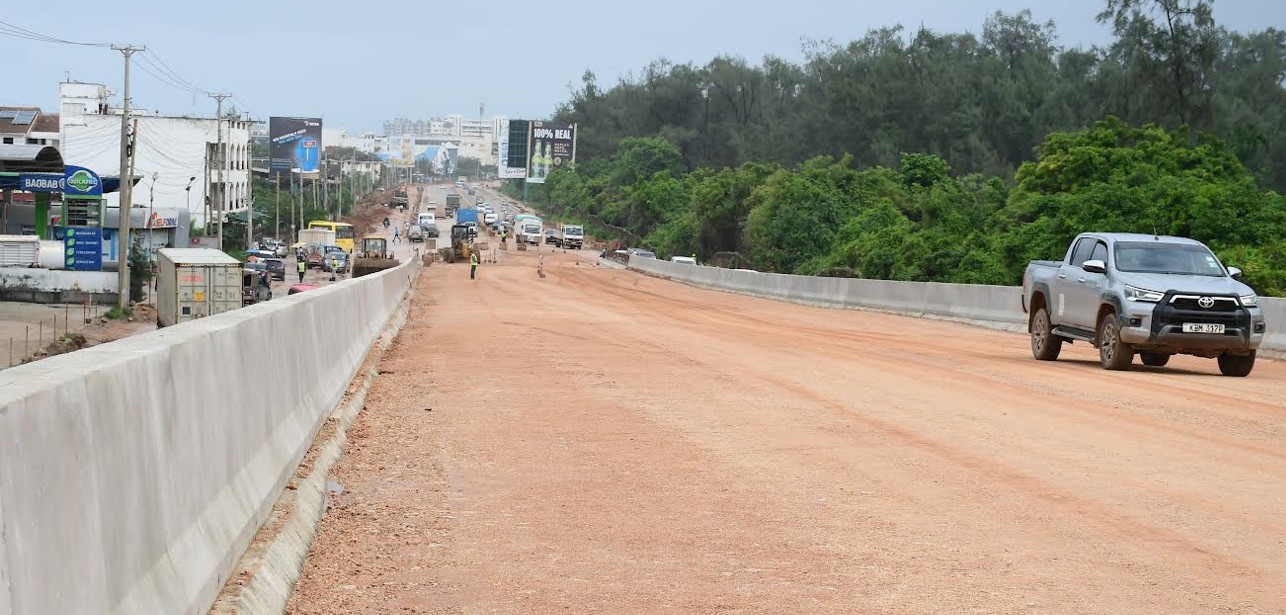Experts blame floods on poor urban planning, call for urgent measures
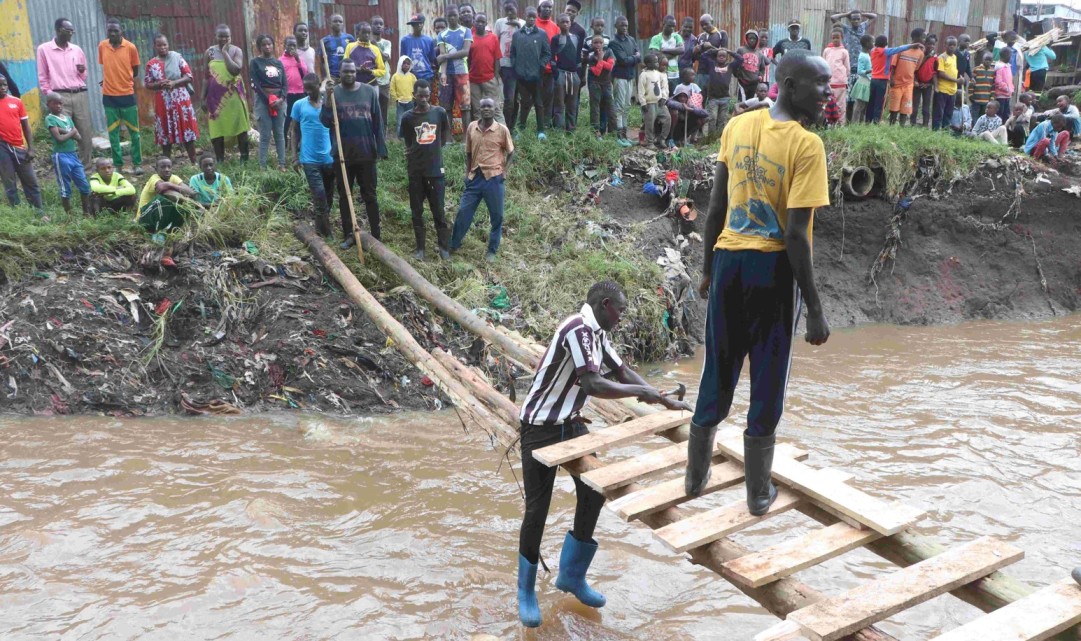
Planners say as towns have expanded and construction of buildings over time have reduced space for rainwater to sip into the ground.
Decades of poor urban planning and bad land management are to blame for Kenya’s devastating floods, planners have said, warning that more havoc could be witnessed in the future if current planning challenges are not addressed.
Floods from the ongoing rain have so far killed over 200 people and rendered thousands homeless.
More To Read
- Dozens killed, hundreds displaced as heavy rains batter several counties
- Update: 15 dead after massive landslide in Elgeyo Marakwet County following heavy rains
- Rain turns deadly in Garissa, killing over 500 livestock
- How blocked drainage systems, open sewers threaten lives, businesses in Eastleigh
- Kenya Met warns of reduced rainfall but showers to continue in parts of the country
- Heavy rains disrupt Nairobi traffic as Kenya Met warns of more downpours
“Where the flooding occurred, people have been allowed to put up buildings, even though this is a riparian reserve. This is what caused the water to rise,” said Mairura Omwenga, the chairman of the Town and County Planners Association of Kenya.
Omwenga said this case and many others across the country could have been avoided if those in charge of towns heeded calls from the weatherman to plan for heavy rains in April.
Experts say that over the years, as towns have expanded and roads and buildings constructed to match growing populations, the space left for rainwater to sip into the ground has diminished.
There are also no new drainage systems to match the infrastructure growth, they say.
Leaders are also on the spot for not preventing building along riparian reserves and failing to facilitate the development of new drainage systems based on infrastructure growth.
In Nairobi for instance, no new plan has been developed since 2013. This is despite a huge population growth and infrastructure development.
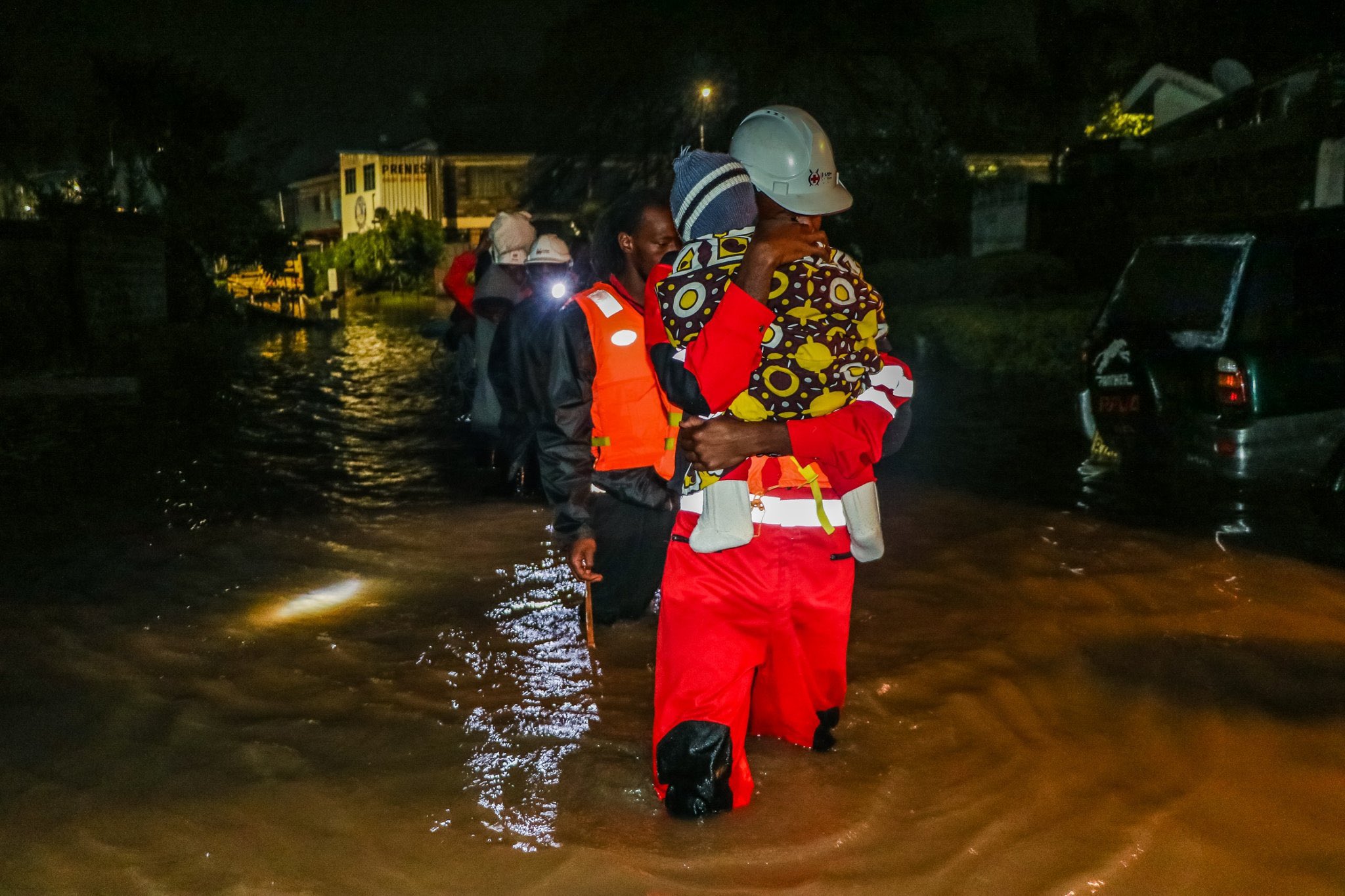 Red Cross members evacuat a family stranded by floodwaters in their house in Imara Daima, Nairobi on May 3, 2024. (Photo: Red Cross)
Red Cross members evacuat a family stranded by floodwaters in their house in Imara Daima, Nairobi on May 3, 2024. (Photo: Red Cross)
“Our development plans are very old, and the ones that we have prepared recently fail to appreciate and incorporate a drainage system as a core element of that plan,” said Omwenga.
Maintenance of drainage systems through simple processes such as clearing them, should also be a core element of the plans, and enough resources should be allocated to it, he said.
“We could build good drainage systems, but if we do not maintain them, then they will become blocked and we will have the same problem,” Omwenga said.
Lack of implementation
Hezron Kagia, an urban planner who has conducted studies on the planning systems in Kenya and Belgium, said the main problem is not implementing the country's plans.
He said that poor implementation of plans has allowed unscrupulous developers to collude with corrupt state officials and build on riparian reserves or in places that should not be heavily populated.
“In Nairobi for instance, higher grounds such as Kilimani and Kileleshwa are meant to have lower population densities to create more space for water coming from Ngong hills to sip to the ground before getting to the Nairobi River,” said Kagia.
But with huge populations in these areas, water from the Ngong hills cannot adequately sip into the ground and ends up in South B, parts of Eastlands, Mathare, and other downhill places.
"This has resulted in the flooding that we are witnessing in parts of the city of Nairobi," said Kagia.
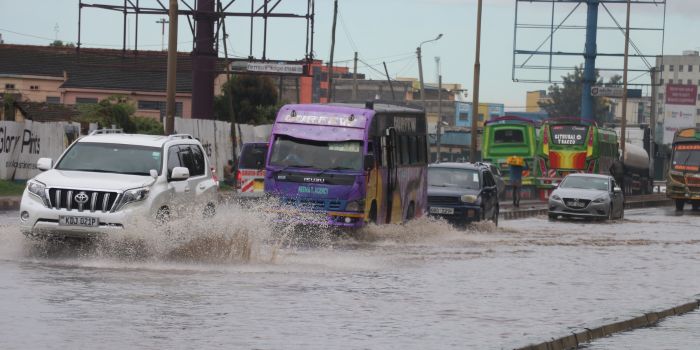 A flooded section of Ring Road Ngara in Starehe Constituency, Nairobi, is pictured on April 21, 2024, following heavy rains in the area. (Photo: Justine Ondieki)
A flooded section of Ring Road Ngara in Starehe Constituency, Nairobi, is pictured on April 21, 2024, following heavy rains in the area. (Photo: Justine Ondieki)
The planner said that Kenyans need to be educated on the dangers of building on riparian reserves or places that should not be highly populated.
“We have seen this mostly in the informal settlements where structures are often put up on any bare land that is available, even when this happens to be riparian land,” said Kagia.
He said that those who have already built too close to rivers, on wetlands, or who live downhill where they are likely to be affected by flash floods, should move before any calamity finds them.
“There are those who might suggest we do away with buildings on riparian reserves but that would not be sensible as, already, too much has been invested. What can be done is to invest in measures that will mitigate future risks,” said Kagia.
David Muiruri, also a planner and tutorial fellow at the Technical University of Kenya, said that there is a need to ensure that funds meant for planning and disaster management are strictly used for the intended purposes.
According to recent data from the Office of the Auditor-General, out of Sh1.9 billion set aside for disaster management in counties in the 2023/2024 financial year, only Sh963 million was spent as of December 2023.
“There is enough money for disaster management and risk mitigation. However, many times this money is allocated to things that are not crucial,” said Muiruri.
This has resulted in ineffective enforcement of the guidelines and standards set for the development of houses, amenities, and other infrastructure, especially along riparian reserves.
“What happens with our planning system is that only when something is wrong do we fix it. That is why only after it rains do we remember unclogging drainages when we had an entire dry season,” said Muiruri.
Top Stories Today





